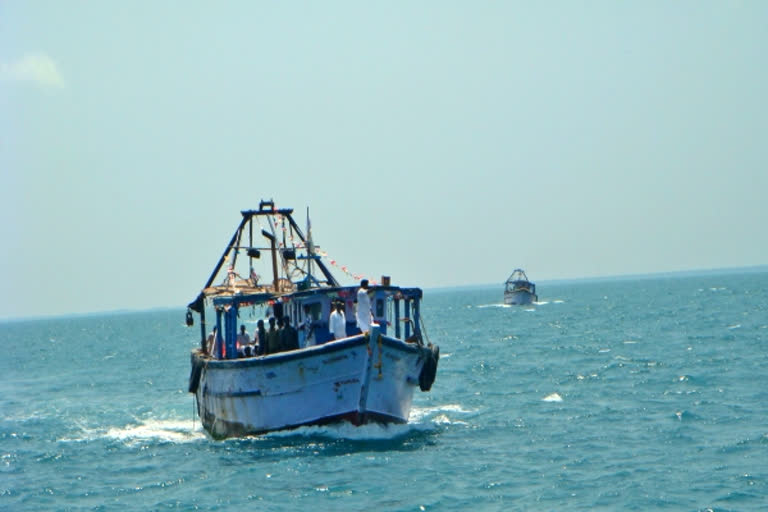Hyderabad: The fishing industry has come really far since the country introduced mechanized fishing along the coast with the help of Norway under its Blue Revolution schemes in the 1970s. But the communication at sea still remains in its nascent stages for the fishing community, that many a time leads to life or death situations for a section of Tamil Nadu fishermen who sail as far as 1500 nautical miles to catch fish.
There was a protest in Thoothoor fishing village in the state recently in which the fishermen launched a novel protest of handing over their satellite phones back to the authorities. The fishermen complained that the satellite phones were of poor range and little use during their fishing expeditions.
Relaying information boat by boat
Communication at sea without modern equipment is a tricky affair, especially after the shore disappears just one nautical mile out, up to which the local mobile connectivity works.
Fishing boats use a high-frequency VHF network to communicate among themselves. This VHF network works better during sunny days with a clear range of 40 to 60 kilometres but turns abysmally low when the sea turns turbulent.
In case of emergencies or SOS situations, the fishing boats follow a pattern of communication weaving a kind of relay system. The boat which wants to communicate starts a relay transmission using their VHF handsets, requesting the nearby boats or ships to pass on the message and the boats which pick up their frequency post the same message for the relay.
Deep-sea fishermen of Thoothoor
Thoothoor is a village panchayat, consisting of eight fishing hamlets, on the Western coast of Tamil Nadu’s Kanyakumari district. What makes Thoothoor fishers special is that they are traditional shark hunters who mainly use hooks for fishing. When the fishing industry modernized along the Coast, these shark hunters evolved into something bigger than their counterparts along the coast. While the traditional fishermen adopted trawl fishing, the Thoothoor fishermen started taking up deep-sea fishing using long lines (hook fishing) sailing as far as 1000 to 1500 nautical miles with each fishing trip taking anywhere between 30 to 45 days.
Also read:Sri Lanka Navy arrests 54 Indian fishermen, seize 5 trawlers
It can be recalled Indian or Tamil Nadu fishermen are frequently apprehended by the Sri Lankan navy due to the row with Sri Lankan fishermen, but these deep-sea fishermen were a couple of times arrested by foreign navies including the British Navy when they accidentally strayed into British Indian Ocean Territory (BIOT) in the Indian Ocean. On other occasions, they were apprehended by the Seychelles Navy, Bangladesh Navy.
Cyclone Ockhi and its aftermath
Cyclone Ockhi that formed in November 2017 caught the deep-sea fishers off guard as such cyclones are rare in the region. As many as 1500 fishermen were initially feared lost in the cyclone with the death toll finally settling down below a hundred as many fishermen managed to reach the shore after a week. But it caused quite a stir in the region as the fishermen who have been feeling neglected for long used the opportunity to raise their plight with then Defence Minister Nirmala Sitharaman. They have registered that their range of fishing is really far from the Indian Coast Guard or Navy who usually patrol in the Exclusive Economic Zone of the country i.e 200 nautical miles from the shore. One among the demands of fishermen was that they lack modern communication equipment like satellite phones.
The use of satellite phones by the fishing community along the Indian Coast is banned due to the fear of such equipment falling into the hands of terrorists, especially after the 26/11 Mumbai Terrorist attack. However, the centre agreed to provide the satellite phones to deep-sea fishermen of this Coastal Village after Cyclone Ockhi and some 500 handsets of BSNL ISAT-2 were distributed by BSNL.
